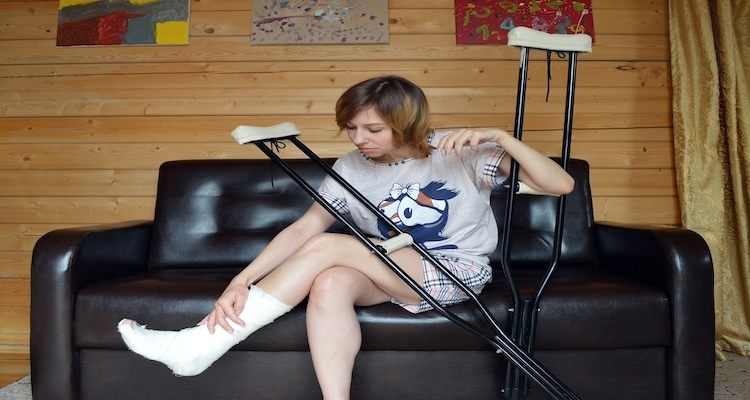
Netball, a dynamic and fast-paced sport, offers players exhilarating moments on the court. However, like any sport, it comes with inherent risks of injury. Whether you're a seasoned player or just starting out, understanding common netball injuries is crucial for prevention and effective management. Let's delve into some of the most prevalent injuries in netball and explore strategies to keep players safe and on the court.
Ankle sprains are perhaps the most frequent injury encountered in netball. The sudden stops, pivots, and changes in direction during play put immense stress on the ankle joints. This can lead to ligament tears or strains. Ankle sprains can range from mild to severe, causing pain, swelling, and reduced mobility.
Strengthening exercises targeting the ankle stabilizing muscles can help prevent sprains. Additionally, wearing supportive footwear and using ankle braces or tape during play can provide added stability.
RICE (Rest, Ice, Compression, Elevation) therapy is often recommended immediately after an ankle sprain to reduce swelling and pain. Gradual rehabilitation exercises focusing on mobility and strength should follow under the guidance of a healthcare professional.
Netball involves frequent jumping and landing, making the knees susceptible to injuries such as ligament tears, strains, and patellar tendonitis (also known as jumper's knee). These injuries can result from overuse, sudden changes in direction, or improper landing techniques.
Proper warm-up routines including dynamic stretches can prepare the muscles and joints for the demands of the game. Strengthening exercises targeting the quadriceps, hamstrings, and glutes can also help stabilize the knee joint.
Rest, ice, and anti-inflammatory medications can alleviate pain and swelling in minor cases. For more severe injuries, professional medical evaluation and rehabilitation may be necessary to regain strength and mobility.
Netball involves frequent passing, catching, and contesting for the ball, putting players at risk of finger injuries such as dislocations, fractures, or ligament strains. These injuries can occur when fingers are struck by the ball or during contact with other players.
Wearing finger splints or tape can provide added support and protection during play. Additionally, practicing proper catching and passing techniques can reduce the risk of finger injuries.
Immobilization, ice, and elevation can help manage pain and swelling in minor cases. More severe injuries may require medical attention, including splinting or casting.
The Achilles tendon, which connects the calf muscles to the heel, can become strained or ruptured due to the explosive movements involved in netball, particularly during jumping and sudden accelerations.
Gradual progression of training intensity and incorporating proper stretching and strengthening exercises for the calf muscles can help reduce the risk of Achilles tendon injuries.
Rest, ice, and elevation are initial steps in managing Achilles tendon injuries. Physical therapy focusing on strengthening and flexibility may be recommended to aid in rehabilitation.
Netball players frequently use their arms for passing, shooting, and defending, increasing the risk of shoulder injuries such as strains, dislocations, or rotator cuff tears. These injuries can occur from overuse, improper technique, or contact with other players.
Proper warm-up exercises targeting the shoulder muscles and incorporating shoulder-strengthening exercises into training routines can help prevent injuries. Additionally, practicing proper tackling and defending techniques can reduce the risk of shoulder trauma.
Rest, ice, and anti-inflammatory medications can alleviate pain and swelling in minor cases. Physical therapy focusing on strengthening and mobility may be necessary for more severe injuries.
Ligament sprains, particularly in the wrist and fingers, can occur when players fall or collide with other players during play. These injuries can result in pain, swelling, and limited mobility.
Strengthening exercises targeting the wrist and finger muscles can help prevent ligament sprains. Additionally, wearing supportive wrist braces or tape during play can provide added protection.
RICE therapy is often recommended initially to reduce pain and swelling. Immobilization and gradual rehabilitation exercises may be necessary for more severe sprains.
Although less common than other injuries, concussions can occur in netball, particularly from collisions or falls during play. Concussions require immediate medical attention and should be taken seriously due to their potential long-term effects.
Encouraging fair play and emphasizing proper tackling and landing techniques can help reduce the risk of concussions. Additionally, promoting the use of protective headgear during play may offer added protection.
Any suspected concussion should be evaluated by a healthcare professional. Rest and gradual return-to-play protocols are essential for recovery and reducing the risk of long-term complications.
In conclusion, while netball is an exciting and rewarding sport, it's essential to be aware of the potential risks of injury. By understanding common netball injuries and implementing preventive measures such as proper warm-up routines, strengthening exercises, and using protective gear, players can reduce their risk of injury and enjoy a safe and fulfilling experience on the court. Prompt and appropriate management of injuries is also crucial for ensuring optimal recovery and minimising the impact on players' long-term health and performance.
You should always consult a qualified healthcare professional about any injury prevention management strategies and this blog does not offer medical or health advice. If you want to find a specialist to consult do search our easy to use directory to find a sports physiotherapist, chiropractor, sports therapist, or osteopath near you.
Image by Victoria from Pixabay
